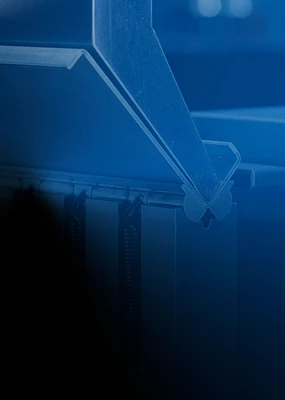As any experienced press brake operator knows, shimming dies can be extremely time consuming, and it requires a technique that is very hard to teach. As such, this option should be used only as a stop-gap measure to help you complete the job and then reload your crowning system for the next job.
4. Allow for Plenty of Working Space
Be sure to leave plenty of working space between the punches and the dies. This should allow for easy part manipulation during the bending sequence and easy part removal when finished.
When possible, maintain at least 4 in. (101 mm) of working space between the punch and die when bending small to mid-sized parts made of light-gauge materials, and 6 in. (152 mm) or more when bending boxes and four-sided parts. Of course, parts with complicated bend sequences and those made of thick plate may require even more.
5. Have Enough Stroke Length
Stroke length should be equal to at least 50% of the machine’s open-height specification. Of course, the clamping system, punches, dies, and crowning system or die holder (whichever applies) will consume a large percentage of the open height when installed.
When bending materials between 22 and 10 ga., have enough stroke length for the punch to reach the top of the die holder when all of the components except the dies are installed. This ensures sufficient stroke length to reach the bottom of the V opening on any die. It’s also good practice not to run the drive components out to the end of the stroke.
Note that this rule isn’t practical when bending thick plate over large V-die openings. But again, when working with material between 22 and 10 ga., it can be a good practice to follow.
6. Consider Punch Extenders
If you are bending four-sided parts like boxes and pans, be very careful when selecting the punch. You want to prevent the sides of the parts from sweeping up toward the ram or the clamping system when you bend the third and fourth side (see Figure 6).
Because of the extreme tooling height requirements to form these parts, you might find you don’t have a punch tall enough to bend them. In these cases, you might need a special, extremely tall punch made specifically for the job. Another, usually less expensive, option is to use a punch extender combined with a standard punch. Punch extenders can have more value as well, since they can be used to form other parts in the future.
To determine the required height of the punch (or punch and punch extender combination) to bend a four-sided part, multiply the depth of the part by 1.7. Note that this rule does not apply to press brakes equipped with a heavy-duty clamping system. Measured from front to back, such systems are much wider than standard clamping systems and, therefore, create a much wider interference zone. If you have a heavy-duty clamping system and foresee a potential collision, contact your press brake tooling supplier to find out what solutions are available.
7. Consider Taller Dies and Die Risers
Before bending, always consider the location of the bends on your parts. For example, do they have any tabs or offset bends that are far into the sheet from the edges, thus creating a long down-flange? If so, you will need a tall die to prevent the down-flange from colliding with the die holder or the bed of the machine (see Figure 7).
Nearly all press brake tooling manufacturers offer taller dies, die risers, or standard die holders that will enable you to raise the height of your dies farther above the bed of the machine. Before purchasing these items, however, verify that the backgauge on your press brake can be elevated to the higher location of the top of the die.
8. Simulate Your Bends
If you program your parts offline before sending the job to the press brake, you have a very powerful tool at your disposal. Bend simulations expose parts that will cause collisions and offer alternatives before you experience collisions at the press brake. Of course, you may be able to perform the same simulations on your press brake’s controller. Doing so, though, will tie up the machine when it could be bending parts.
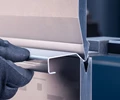 Air bending
Air bending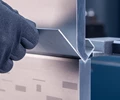 Bottom bending
Bottom bending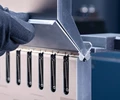 Bending short flanges
Bending short flanges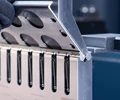 Bending with cut-outs near the bend line
Bending with cut-outs near the bend line Bending without galling
Bending without galling Box bending
Box bending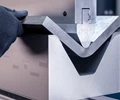 Heavy Duty bending
Heavy Duty bending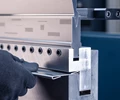 Hemming
Hemming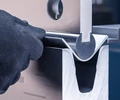 Large radius bending
Large radius bending Mark-free bending
Mark-free bending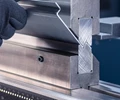 Offset bending (Z-bending)
Offset bending (Z-bending)